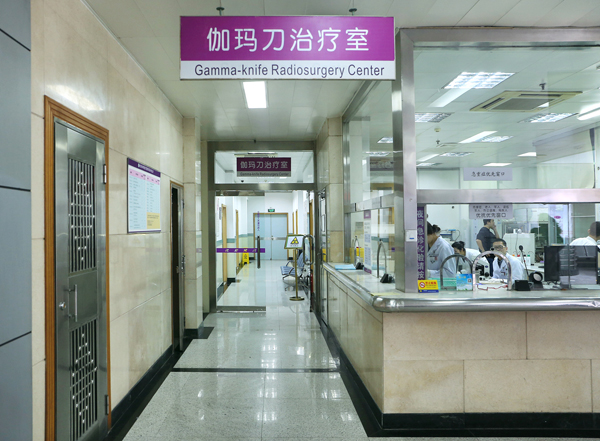
Department Overview
Gamma KnifeRadiosurgery isthe only large-scale stereotactic neurosurgery radiotherapy department in Shenzhen, composed of the earliest experts engaged in clinical work of gamma knife in China.
The department has introduced the world's advanced "MASEP-SRRS Gamma Knife", which uses cobalt-60, which can generate gamma rays, as the gamma rays. The gamma rays are focused on pre selected targets in the skull, and the lesion tissue inside the target is destroyed in one go to achieve a treatment effect similar to surgical resection of lesions. The emergence of the Gamma Knife has made the dream of non-surgical treatment for intracranial and systemic tumors a reality. It does not require surgery, is non-invasive, painless, bleeding free, or infectious, providing a safe, reliable, and convenient treatment method for humans.
Characteristics of Gamma Knife
1. The use of cylindrical helmets expands the treatment space, making it convenient for lesions that could not be treated in the past due to their location being too far or too low to be treated;
2. Quickly, intuitively, and manually changing the size of the focus has shortened the stay time of the operating doctor in the treatment room and reducednon-therapeuticradiation to both the operating doctor and the patient.
3. The anti error function of the collimator has been set up, making operators feel more secure psychologically and welcomed by doctors and patients;
4. A switch body shielding protection device has been installed to achieve dual shielding of the helmet and switch body, further reducing unnecessary radiation to patients.
Indications for clinical treatment of gamma knife
1. Tumors: Pituitary tumors, acoustic neuromas, pineal gland tumors, craniopharyngiomas, trigeminal neurofibromas, meningiomas, brain metastases, chordomas, vascular reticular cell tumors, gliomas, embryonal tumors, nasopharyngeal carcinoma, retinal melanoma, etc.
2. Cerebrovascular diseases: arteriovenous malformations, cavernous hemangiomas, etc;
3. Functional disorders: Parkinson's disease, trigeminal neuralgia, epilepsy, malignant pain, etc;
4. Other: mental illness, etc.